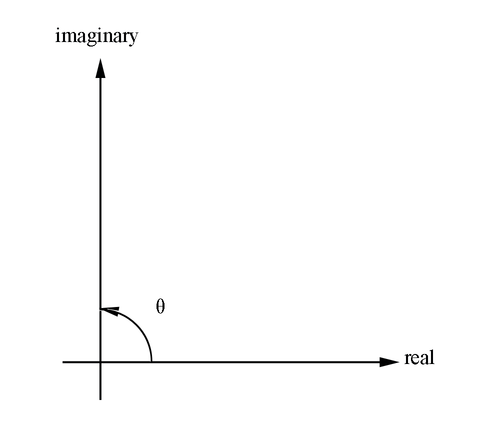Difference between revisions of "Limits based on Mandelstam Variables"
| Line 72: | Line 72: | ||
| − | <center><math>t=4m^2-4m^2 | + | <center><math>t=4m^2-4m^2- 4p \ ^{*2}</math></center> |
| − | <center><math>t=4p \ ^{*2}</math></center> | + | <center><math>t=-4p \ ^{*2}</math></center> |
| − | <center><math>-2 p \ ^{*2}(1-cos\ \theta)=4p \ ^{*2}</math></center> | + | <center><math>-2 p \ ^{*2}(1-cos\ \theta)=-4p \ ^{*2}</math></center> |
| − | <center><math>(1-cos\ \theta)= | + | <center><math>(1-cos\ \theta)=2</math></center> |
| − | <center><math>-cos\ \theta= | + | <center><math>-cos\ \theta=1</math></center> |
| − | <center><math> \theta_{max} \equiv \arccos | + | <center><math> \theta_{max} \equiv \arccos -1</math></center> |
| − | The domain of the arccos function is from −1 to +1 inclusive and the range is from 0 to π radians inclusive (or from 0° to 180°). This implies for arccos | + | The domain of the arccos function is from −1 to +1 inclusive and the range is from 0 to π radians inclusive (or from 0° to 180°). This implies for arccos -1, the range will include imaginary numbers. Knowing that the range of the cosine function is -1 to +1 inclusive and the domain to be any angle |
| − | <center><math>z = \arccos{ | + | <center><math>z = \arccos{-1}</math></center> |
| − | <center><math>\cos{z} = \cos{\arccos{ | + | <center><math>\cos{z} = \cos{\arccos{-1}}</math></center> |
Revision as of 17:30, 12 June 2017
Limits based on Mandelstam Variables
Since the Mandelstam variables are the scalar product of 4-momenta, which are invariants, they are invariants as well. The sum of these invariant variables must also be invariant as well. Find the sum of the 3 Mandelstam variables when the two particles have equal mass in the center of mass frame gives:
Since
This implies
In turn, this implies
At the condition both t and u are equal to zero, we find
Holding u constant at zero we can find the maximum of t
The domain of the arccos function is from −1 to +1 inclusive and the range is from 0 to π radians inclusive (or from 0° to 180°). This implies for arccos -1, the range will include imaginary numbers. Knowing that the range of the cosine function is -1 to +1 inclusive and the domain to be any angle
From Euler's formula
Multiply with
We get an quadratic equation:
Apply the natural log on both sides gives the solution for arccos 3:
Converting to polar coordinates:
Since
Since there is only an imaginary component.
